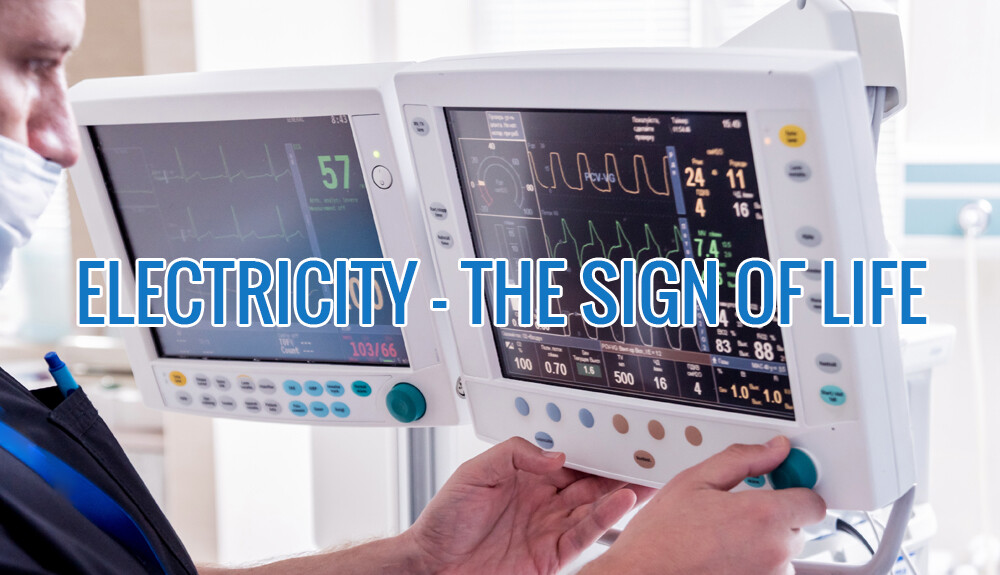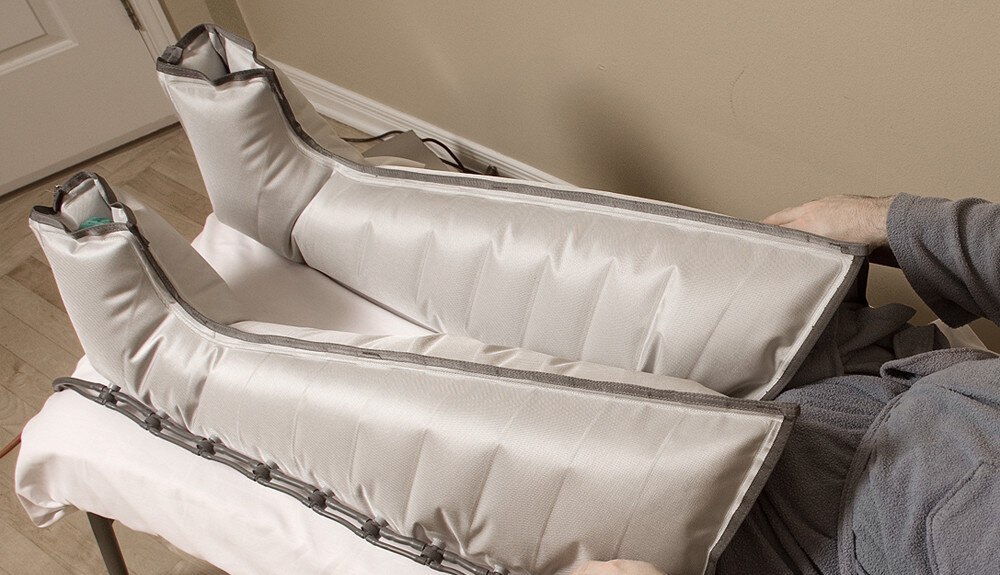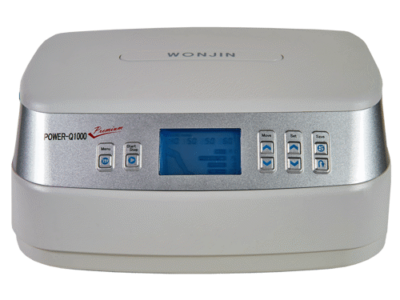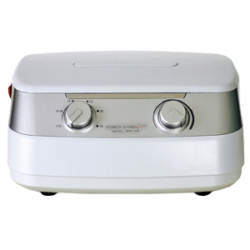If electricity didn’t exist, you wouldn’t be reading this article. Not just because your computer wouldn’t work, but because without electricity, neither would your brain! Every movement, every thought, every emotion is based on electrical signals. These are what enable, control and direct the functioning of your body.
Memories from physics class
In physics class you learned that everything is made up of atoms, which are protons, neutrons and electrons. Protons are positively charged, neutrons are neutral, and electrons are negatively charged. If they are not in balance, the atom is either positively or negatively charged. The difference in charge is what allows the electrons to flow, which creates the electric current.
Because your body has many, many atoms, together they can generate electricity. You could jokingly say that your body is an electricity plant (too).
What does the body use electricity for?
When your brain “tells your hand” to hold the cup, your brain sends “signals” through nerves to your hand muscles to contract. These are entirely electrical signals. Just like when an image you see from your eyes is sent to your brain or your thoughts are bulbous.
Every cell in your body is electrically powered, so electrons don’t travel along wires (like in machines), but the electrical charge “jumps” from one cell to another connected to it to reach its destination. For example, from one nerve cell in the brain to another in the spinal cord, and from there to the muscle. The electrons are transported by the electrical impulses from one cell to another, and from there to the muscle.
Electricity is the key to your survival!
Electrical signals are very fast and this ensures that “control” messages are transmitted extremely quickly, almost instantaneously. This allows you to jump out of the way of an unexpected emergency, pull your hand away if you get stabbed by a spike or burned. If the control for this were only chemical reactions, i.e. you had to move chemicals to issue a command in such cases, you’d die quickly (or in mild cases, you’d burn your finger badly because you couldn’t catch it in an instant on a hot surface)
Your heart is also under full electrical control. The sinus node in the right atrium of your heart regulates your heart function throughout your life. Firstly, it has an automatic mechanism that triggers the heart to contract 60-80 times a minute. On the other hand, it raises and lowers your heart rate as needed. For example, when you run, your heart rate rises because of the increasing demand for blood. When you stop, it decreases.
What causes body electricity?
When you are not transmitting a message, i.e. you are at rest, all the healthy cells in your body have a slightly negative charge.
This occurs because there is a slight imbalance of calcium and sodium ions between the inside and outside of the cell (i.e. the two sides of the cell membrane). This is the membrane potential of the cell, which is on the order of -30-50 microvolts.
In the cell, there are more potassium ions than sodium ions, while sodium ions are in the majority. Potassium ions are negative, so the inside of the cell is slightly negatively charged. Sodium ions are positive, so the outer surface of the membrane is positive. The charge difference is so small that there is no electron flow and the cell does not produce electricity.
If, however, a “message” needs to be transmitted, the “balance is upset”. This is a very complicated mechanism called a sodium-potassium gate or pump. In very simple terms, when a cell receives a pulse from the cell next to it, the gate is activated and releases ions. The negatively charged potassium ion leaves the cell because it is “attracted” to the positivity outside the membrane. Positively charged sodium ions, on the other hand, move towards the negative charge inside the cell. Therefore, the concentration of the two types of ions changes, the “flip” between positive and negative generates an electrical pulse.
This pulse triggers a similar process in the next cell, creating another charge and so on. In this way, an electrical impulse moves until it carries, for example, a pain stimulus from the toe to the brain. The same thing happens when your sinus node causes your heart to contract faster, or when the image your eyes perceive reaches your brain.
What if the control fails?
With all bodily functions relying on electrical signals, any malfunction in the body’s electrical system can lead to serious problems.
For example, a shock or lightning strike can “blow a fuse” that stops the body’s normal electrical functioning (much like a power failure in an appliance).
Of course, there are also less serious electrical problems that lead to a variety of complaints. A disease of the sinus node can cause “misfiring”, i.e. the heart “forgets” to contract, missing a beat. Or, on the other hand, the sinus node may cause a rapid heartbeat when you are in bed and should not have a high heart rate. The electrical impulse that triggers a vasospasm can cause a blood supply disturbance, which can lead to strokes or heart attacks. Mild regulatory disturbances include hypertension of unknown origin or, for example, cold palm sweating.
If electricity is so fundamental, why is it treated with medicine?
Good question! It is clear that today’s medical treatments are overwhelmingly drug-centric. Increasing numbers of people are taking some kind of drug every day. But they have little effect, because the number of patients is not decreasing, but the statistics prove that the number is increasing. If drugs were a cure, they would have to decrease! Rather the trend is not to eliminate the cause (the electrical dysfunction) but to suppress the symptoms. The consequence of this is that most of the drugs have to be taken for the rest of life because they do not cure it.
This was not always the case. Natural remedies (manual therapy, herbs), natural energies (light, ultrasound, magnetism, etc.) and electricity were almost on a par until the middle of the last century. Since then, they have been gradually supplanted by the pharmaceutical industry. And over the last 50-80 years, the pharmaceutical industry has become one of the world’s biggest businesses (after oil, energy and banking).
Some interesting facts about body electricity
Dr Harold Saxton Burr believed that “electricity is a fundamental property of all living organisms”. He demonstrated through a series of experiments that living organisms are surrounded by an invisible electric field, measurable on the microvolt scale, whose changes indicate both healthy functioning and disease states.
Dr. Robert Becker (1923-2008) conducted similar studies, successfully measuring the electrical potential of the cell membrane.
The theory of “injury current” is associated with his name. The theory is based on the theory that when tissue is injured, the electrical charge balance of the cell membranes is disrupted and tissue function stops. The energy production of diseased (injured, inflamed, damaged) cells, protein synthesis and thus regeneration and healing processes also stop. Dr. Becker found that the electrical charge in damaged areas becomes positive and then slowly returns to a balanced, zero value during the healing process.
He began studying salamanders, amphibians known to be able to regrow their lost tails and even limbs. He noticed that in these animals, the charge in the damaged tissue did not return to zero, but became negative. In a study published in 1972, he reported that he observed similar processes in experimental rats that had lost a limb after electrical stimulation as in salamanders. Despite the fact that rats in nature do not exhibit “limb-retraction”.
Radiologist Dr Björn Nordenström analysed about 7,000 chest X-rays and noticed that around the lung tumours there was a clearly defined area 2-3mm wide, which he called a corona (because it was similar to the corona phenomenon around the sun). He was able to show by targeted studies that there was a significant difference in the electrical potential at the boundary between diseased (tumour) cells and intact tissue. His best-known work is the development of an electrical treatment procedure for lung tumours. He was awarded the Nobel Prize for this method.
Recent research based on the above suggests that Becker’s lesion current can be eliminated by microcurrent treatment. This restores cell function and increases energy production by up to 5-8 times. This is the basis of healing.
This in itself could be of huge significance in the treatment and regeneration of chronic inflammation and wear and tear joint disease.
I think the above may already make my point: since your body is entirely driven by electricity, research into electricity should play a much bigger role in the development of disease and of course its treatment.





